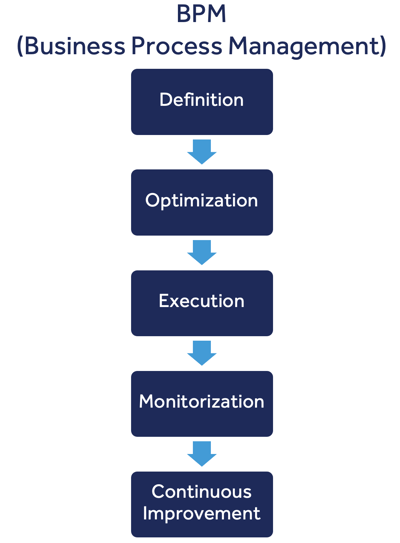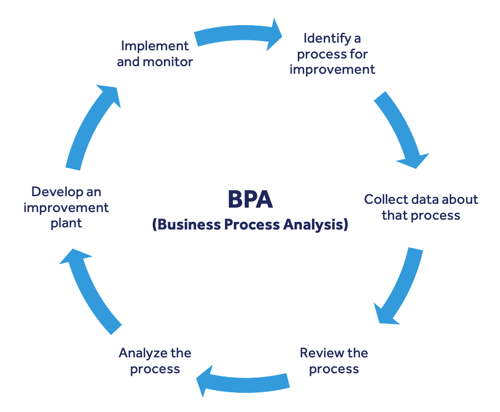BPA vs. BPM: What’s the Difference?
Reducing costs and improving efficiency by understanding your business processes is nothing new. This business discipline has been around for a while, and like any discipline, there is always an evolution and even a divergence where a variation or new concept is born.
This article illustrates the differences between the two most common disciplines designed to better understand and improve your workflows to improve your business: BPA (Business Process Analysis) and (BPM) Business Process Management.
What is BPM (Business Process Management)?
Business Process Management is a method to manage all the processes in an organization and improve them.
At its core, BPM is all about the continuous improvement of business processes that prioritizes the customer and the customer experience. Processes are improved to deliver value faster to the customer.
From a tactical perspective, BPM is executed according to the following pillars:
- Definition – modeling the process and connecting it to all the systems and applications it interacts with.
- Optimization – finding areas in the process to remove waste, redundancies, and mitigate errors to make it more efficient.
- Execution – executing the process to ensure improvements have had the desired effects and applying it broadly across all subject matter experts and process owners.
- Monitorization – monitoring the process to ensure the improved workflow is performing according to expectations and objectives.
- Continuous Improvement – with constant monitoring, continuously looking for areas in the process that can be further improved for even greater efficiency gains and value delivery.

What is BPA (Business Process Analysis)?
Business Process Analysis is a discipline that focuses on documenting and analyzing business processes to make them better and improve efficiency and value delivery; however, it relies on different techniques. BPA relies on data to find ways to optimize processes and improve the way a company does work.
BPA uses data that is collected to identify which processes are working well, which aren’t, and where there’s waste and redundancies. BPA then takes it a step further by using predictive analytics to identify and visualize how a process can be improved, create an improvement plan based on that analysis and simulation, and then execute on that plan.
A simplified approach to Business Process Analysis follows this structure:

- Identify a process for improvement
- Collect data about that process
- Review the process
- Analyze the process
- Develop an improvement plan
- Implement and monitor
Learn more: 6 Easy Steps to Implement Enterprise Business Process Analysis (EBPA)
BPA vs. BPM: What’s the Difference Between the Two?
At its crux, Business Process Analysis is a subset of Business Process Management, but it’s a bit more nuanced than that.
While BPM is an overarching term that refers to how processes are managed in an organization, it is now associated with a slightly outdated business discipline. Business Process Management is centered around improving processes, but it’s also a way to govern all processes in a standard manner across the organization.
Business Process Analysis is a more modern offshoot of BPM that relies on data to find and identify ways to improve processes. Another major differentiator is that BPA is predicated on aligning business processes with business objectives and goals.
Because of its modernized approach with data usage that enables deeper, more thorough, and quicker analysis, BPA also looks to connect all processes with the bottom line. Relating the process’s business objectives allows BPA to continuously reduce costs, increase efficiency, and drive higher value by identifying which processes contribute to that, which don’t, and what changes can be made to rectify misaligned processes or even poor ones.
Are you interested in learning more about BPA? Download the brochure, Improve Your Processes, Transform Your Business, to see how BPA can help you achieve your business goals, connect which processes are part of that equation, and improve the ones that aren’t.
Share this
Recent Stories

An Essential Guide to Business Process Management (BPM)

5 BPA (Business Process Analysis) Techniques You Should Know

